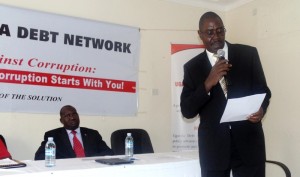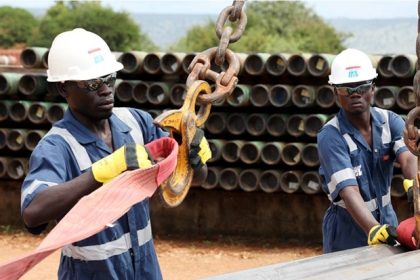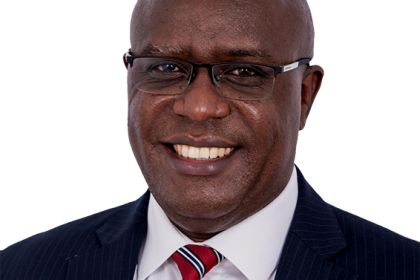Civil society group up in arms over foreign debt
October 13—The Uganda Debt Network (UDN), took the opportunity at a recent regional conference, to once again query the government’s increasing foreign debt portfolio although the International Monetary Fund (IMF) has said at 38% of GDP the level is still sustainable. Fifty percent and upwards is considered the tipping point towards unsustainability.

Tumwebaze told participants at the conference UDN estimates Uganda’s total foreign borrowings now stand at $12 billion
“Our debt levels are rising again. We can debate about the reasons for that. Official statistics say $7 billion some say $9 billion, but as civil society we calculate it to $12 billion. This is threatening to the future of Uganda. Our national debt must be contained through strategic planning,” Patrick Tumwebaze, the Uganda Debt Network executive director said in mid-week.
During the Eastern Africa Regional Conference on Debt that was held in Entebbe, Tumwebaze said there is a need to adopt and implement the principles for responsible sovereign lending and borrowing in Uganda. The theme of the conference was ‘Addressing core challenges arising from the management of public debt at regional level’.
Prof Ezra Suruma, the Senior Presidential Advisor on Planning and Economic Development said Uganda’s debt problem is mainly due to mismanagement of the loans. He said although the government borrows money to invest in the economy, it is frequently not used for intended purposes due to corruption and embezzlement.
“Much of the borrowing is for infrastructure like the oil refinery, the railway and crude oil pipeline, but there are fears the country may be headed for a financial crisis since the money goes back in the form of payment for foreign contractors,” he said.
According to the IMF, Uganda’s public debt will keep rising due to ongoing ambitious infrastructure investments by government. Uganda is facing an infrastructure deficit, which is affecting the country’s long term economic development.
In the early 2000s, Uganda was one of the first beneficiaries of the Highly Indebted Poor Countries Initiative that involved both multilateral and bilateral donors forgiving much of total foreign debt accumulated up to 1986 when the NRM government took over power. Critics worry the government is heading down the same road, but creditors may not be as sympathetic.
However at the end of last year, a visiting IMF team stated: ‘The Debt Sustainability Analysis (DSA) update indicates that Uganda remains at low risk of debt distress. The Ugandan authorities are in a phase of scaling up public investment in infrastructure to support high and sustain able growth over the medium- and long-term. As a result, debt is projected to continue increasing until these projects are completed and the expected growth dividend kicks in. Strong project selection and implementation frameworks will be key to the success of the authorities’ strategy, as well as fiscal consolidation once large infrastructure projects are completed, including by boosting domestic revenue mobilization’.

 AfDB puts up nearly $700m for Burundi-Tanzania SGR link
AfDB puts up nearly $700m for Burundi-Tanzania SGR link
 Bank of Uganda keeps base rate at 9.5% to support surge in GDP growth
Bank of Uganda keeps base rate at 9.5% to support surge in GDP growth
 Africans must resist being bulldozed in energy transition timetable debate
Africans must resist being bulldozed in energy transition timetable debate
 Standard Bank Group appoints new Chief Executive for Uganda Holdings
Standard Bank Group appoints new Chief Executive for Uganda Holdings
 TradeMark Africa introduces new App to limit EAC trade barriers
TradeMark Africa introduces new App to limit EAC trade barriers
 Employer hiring up during November as Stanbic PMI rises to 53.4
Employer hiring up during November as Stanbic PMI rises to 53.4
